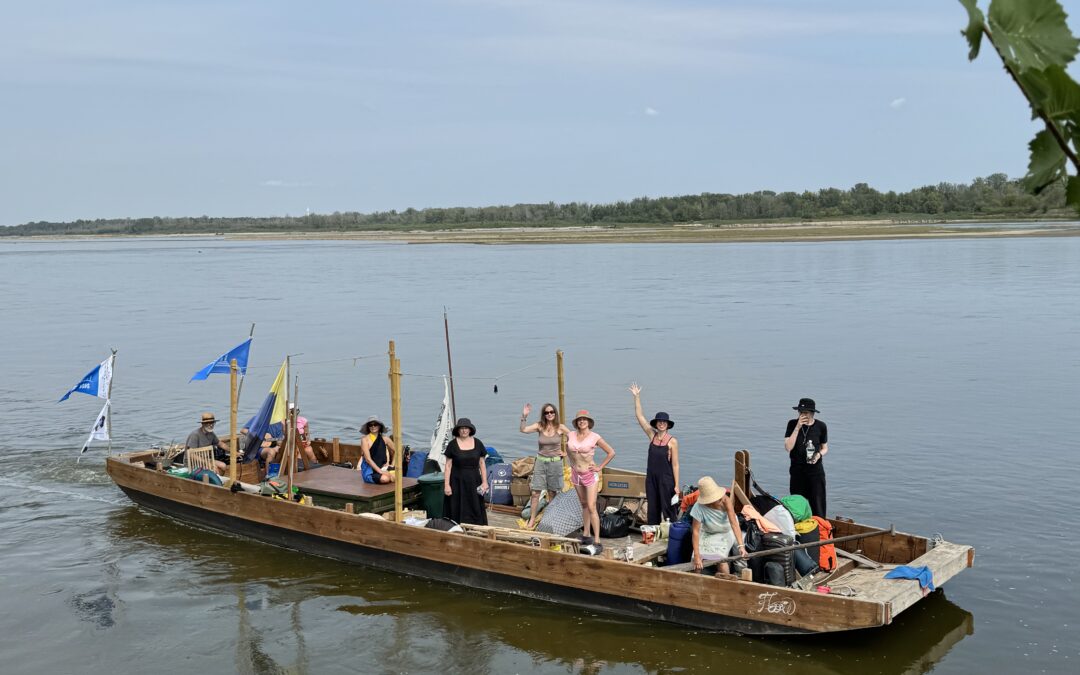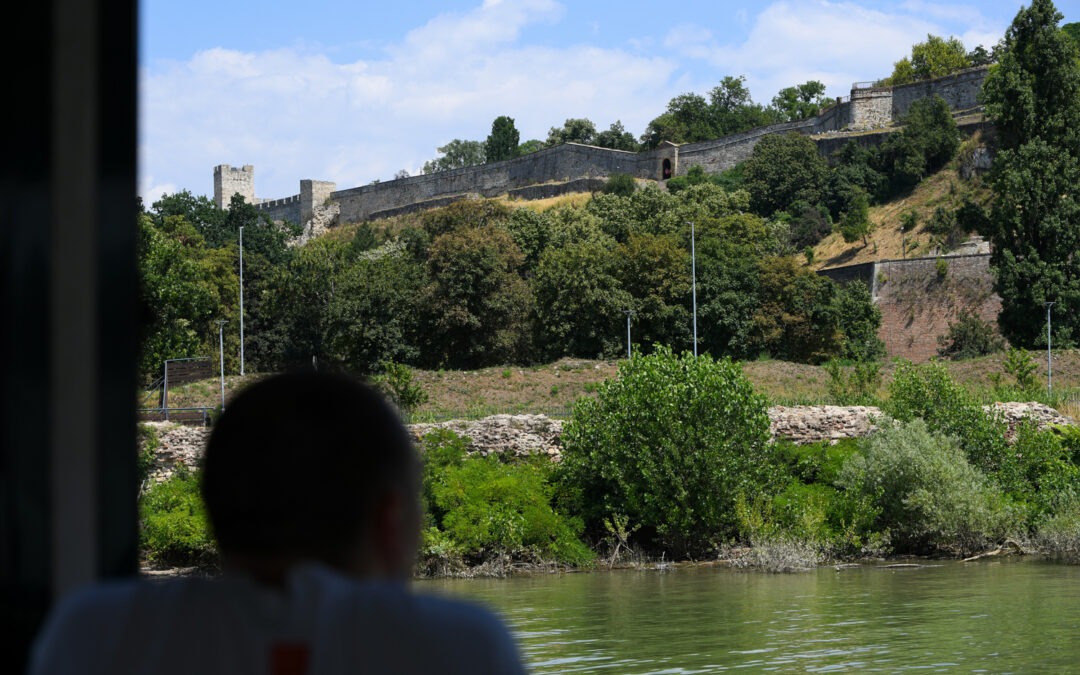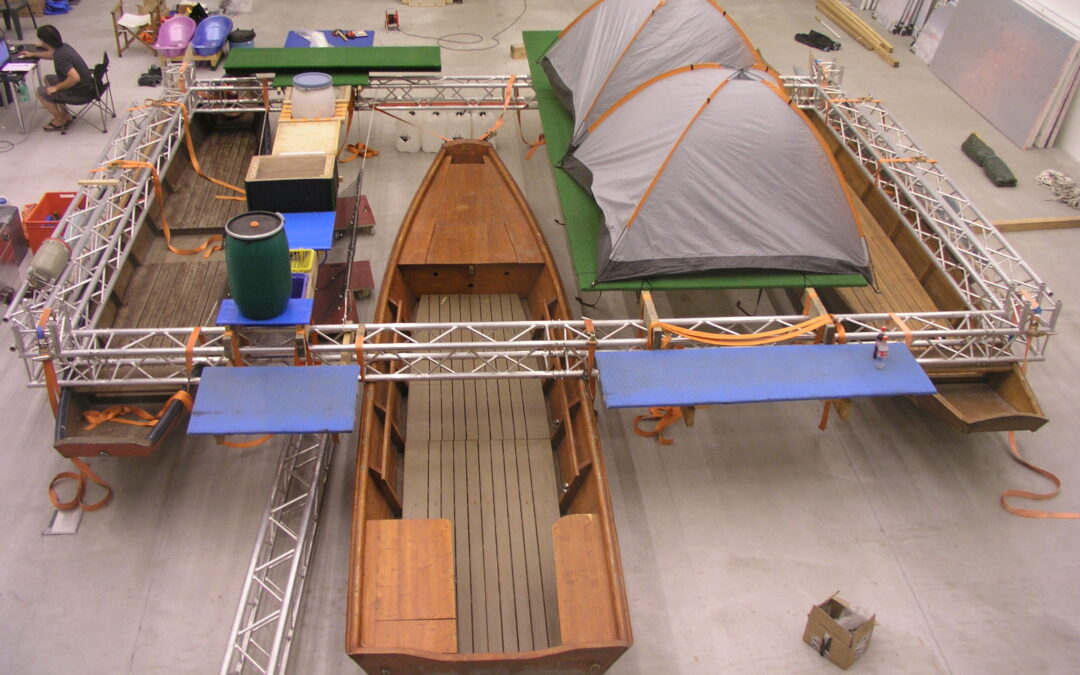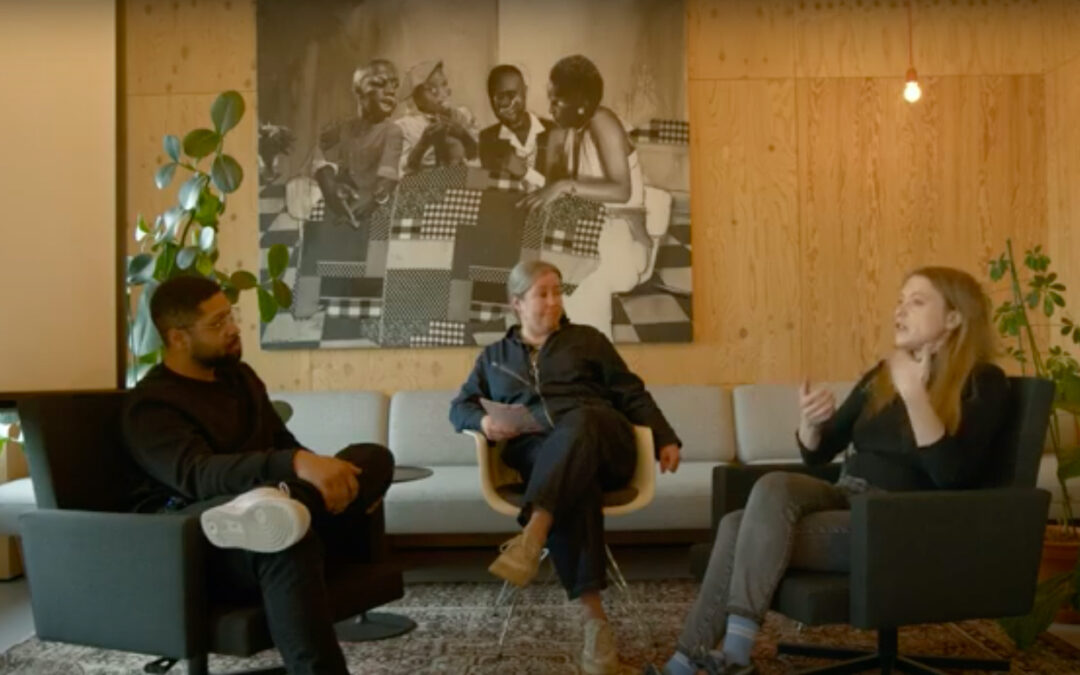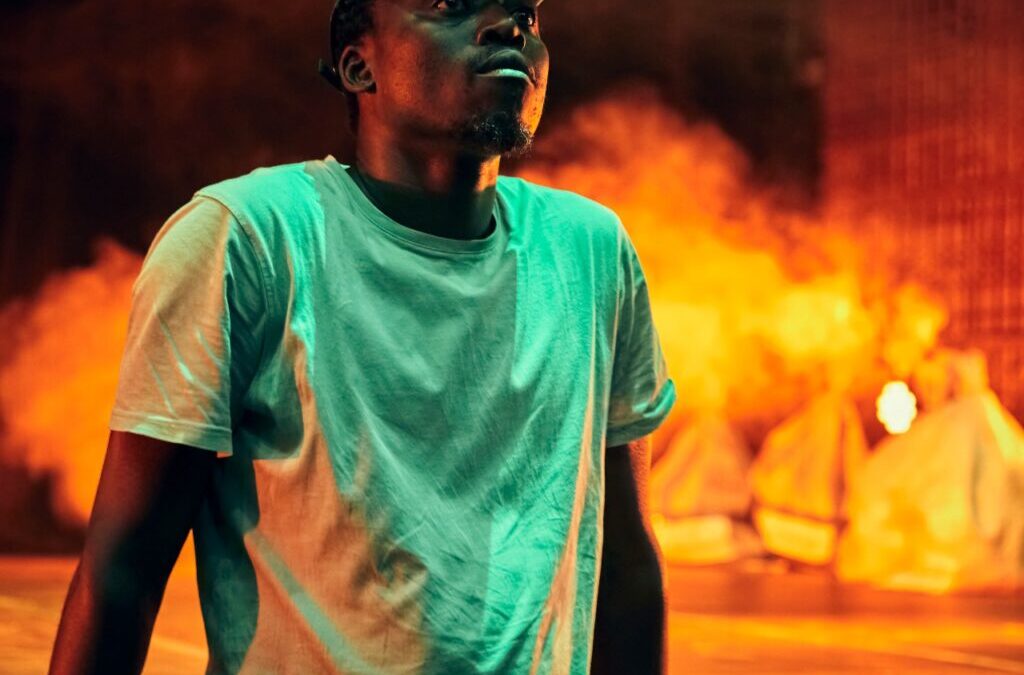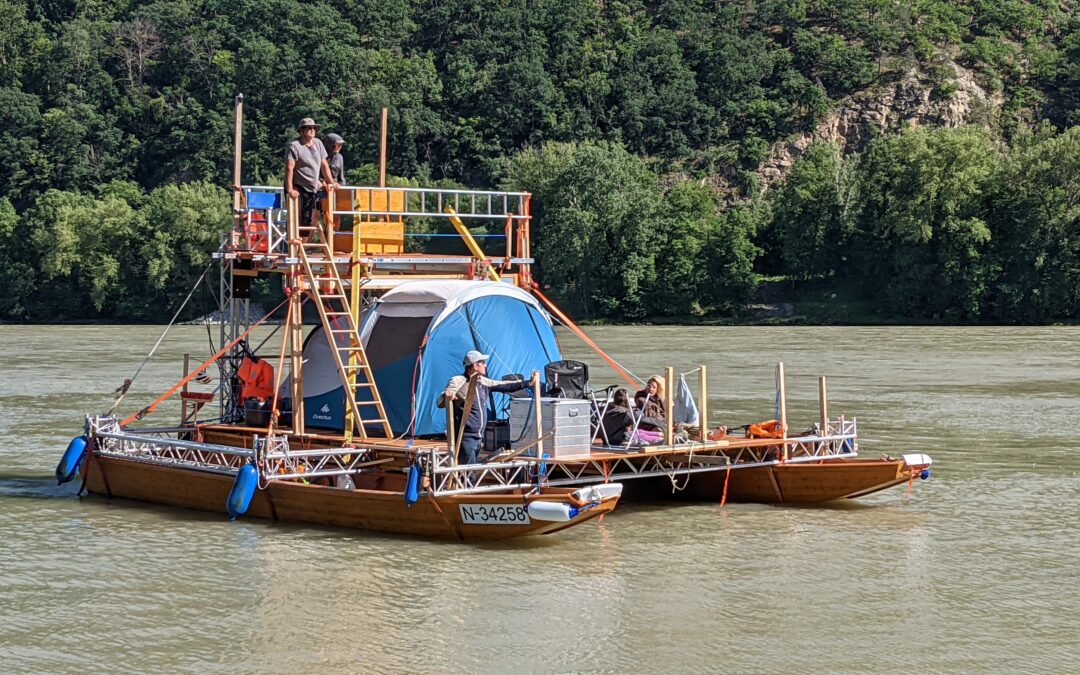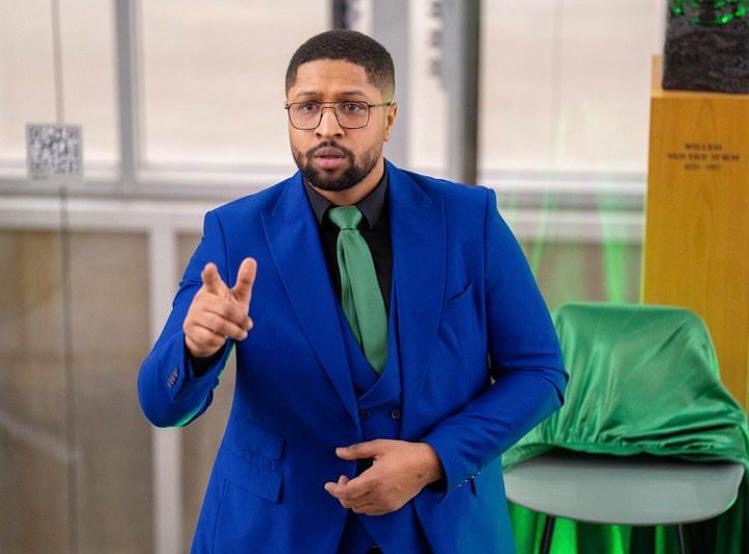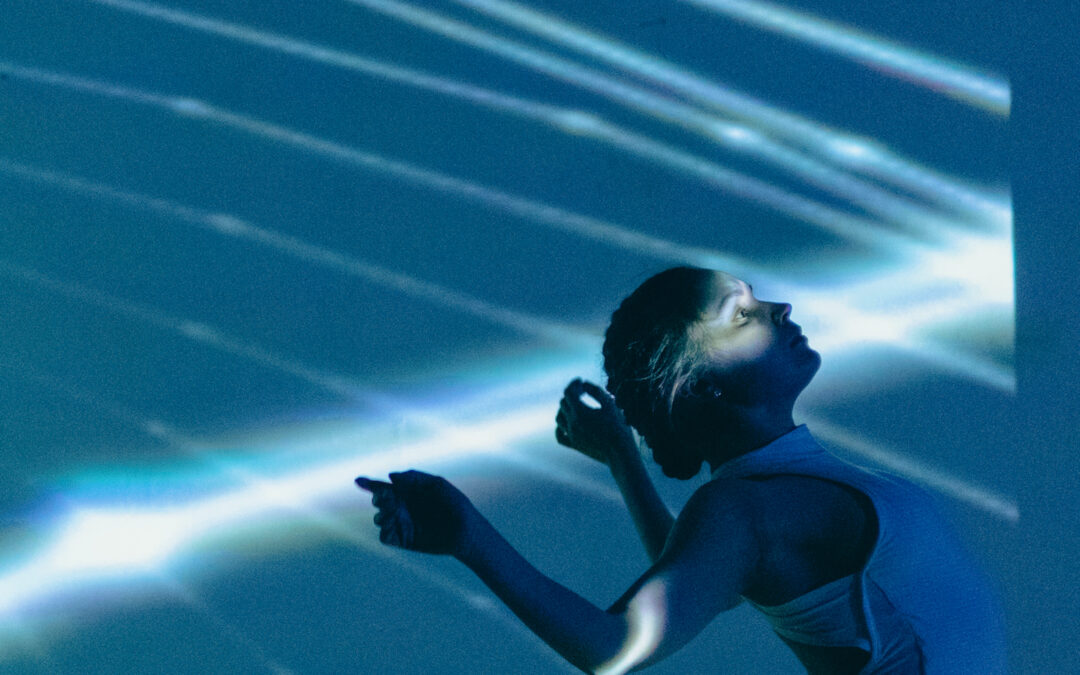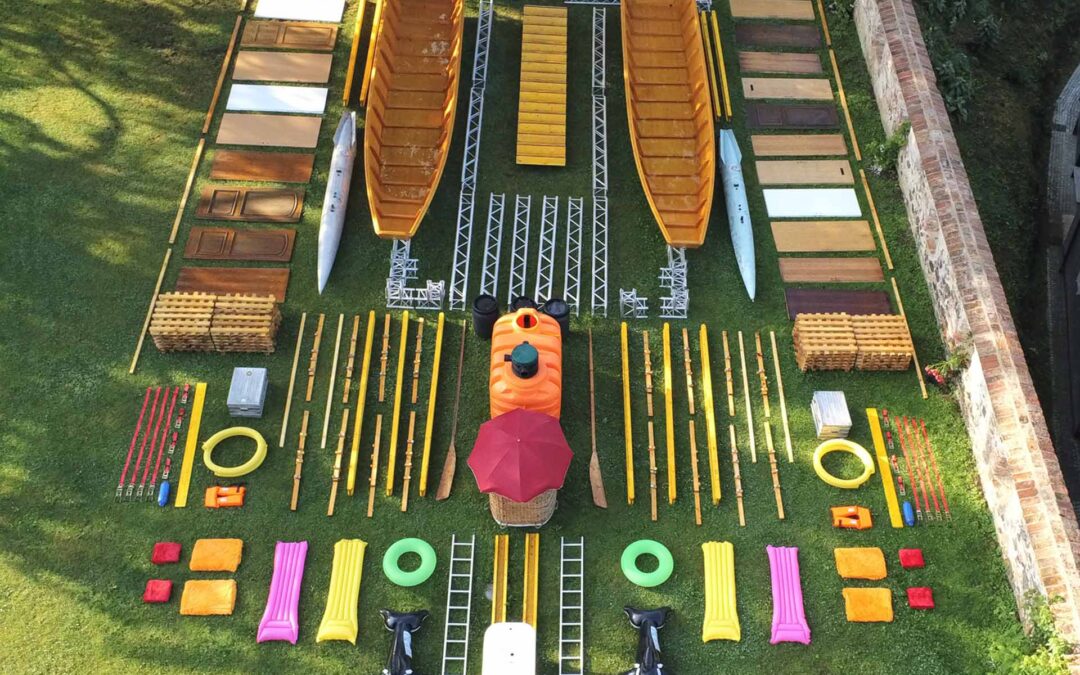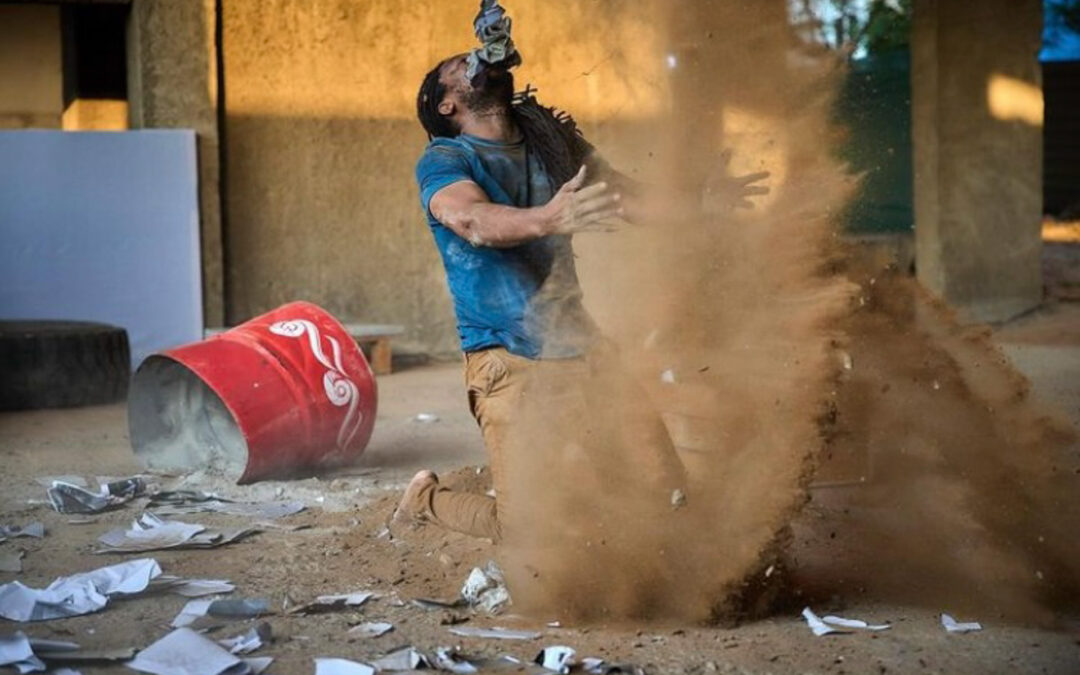“My dance is my dance, what I share are the energies.” Idio Chichava (1)
Planta Inclán hosted its first South-South Residency in April and May this year. Co-produced with Espaço Agora Now and supported by the Kinani Biennial, Cartography of a Secret City: Which Dance for Which Space? brought the Mozambican dancer, choreographer and director of Converge+ Dance Company Idio Chichava to Buenos Aires. The residency included several activities, some of which were planned and some of which were natural outputs from the process.
Idio held a five-week workshop at Planta Hall with more than 80 local artists taking part. During the workshop, he developed the themes that gave the residency its name: on the one hand, his research into cartographies – a way of making maps with our body and rediscovering spaces – and on the other, the question of which dance for which space?that offered dancers a training technique, a form of expressive language, and methodologies for intervening in urban spaces.
In addition, Idio and the Planta team initiated a choreographic investigation of the territory based on these cartographies in the southern area of Buenos Aires. This research led to them making a short film on Isla Maciel with an expanded crew that included people from the neighbourhood. It’s also worth mentioning the interview given by Idio, which was an important contribution to this text.
All of these activities are the result of collective thoughts between agora now, the Kinani Biennial and Planta that began in early 2021. One of the key issues that drove this initiative was the question of what constitutes a residency. This questioning landed here in Buenos Aires and created Cartography of a Secret City, a residency that interrogated itself, giving it a particular character and sensibility.
In an interview with Establo Hablo, an independent show from El Establo Studio, conducted by one of the participants in the residency, Idio says that this experience is a way of making the kinds of contacts that nourish his artistic concerns. He emphasizes that although the results of a residency depend on its objectives, it’s also crucial to pay attention to those things that emerge thanks to the effervescence of the encounter itself. An opening to the public, for example, could not be given as it could be subordinated to the outcomes of the encounters between artists and communities.
This logic allows us to define a residency as an open, fertile and unfinished space that is completed when it is carried out. It is a porous encounter that leads us to a process that remains attentive to listening to what emerges from within.
Idio will tell us that this residency is “much more than an artistic collaboration. It is an invitation for me, as an artist from Maputo, to understand how this connection is made in Buenos Aires”. One of the focuses of this connection is the link between two countries that belong to the global South, challenging the historical tendency that great artistic exchanges take place between North and South collaborations.
A South-South residency is an opportunity to develop narratives that recognize the similarities between our territories. We must recognize that we are not only victims of colonization, but also witnesses to the ongoing process of colonial imbrication that generated our cultural, artistic, and social practices. From here, we can recognize that we can be an active part of that.
The connections between Maputo and Buenos Aires, two port capitals, were the material that allowed the Secret City to appear. They were built “outside this insistence on Western organization, in the place of spontaneous social organization”. The spontaneous is a practice of the South that appears as a strategy for preserving life and giving it value. It means questioning the colonial narrative.
Finally, every residency will be an exercise of a poetic that will take its material form as it progresses. Then it will come back to us in the form of a challenge that goes by understanding its effects and organizing its results outside the criteria we are accustomed to so that we can remain truly sensitive to its exchange.
Cartographies for a Secret City
Cartography means drawing a map and choreography means writing with the body. In this residency, we internalized cartography as a practice in which these two meanings converge. It is mapping with the body in space in a situated way. For Idio Chichava, cartographies are a way of “putting the body in its present and interacting with space in an instantaneous way”. As a choreographic strategy, cartography is “a powerful way of questioning and revaluing certain spaces in the city, the neighbourhood, and everywhere else”. Space takes on a new value through the mapping of the body.
In cartographies, there is an exchange of sensations and memories. Each territory has its history, which emerges in a particular way through the body, creating “new narratives for the space“. From there, something stays in the body. “[Cartography] creates new narratives for space, and thus new imaginaries for the body.” (2)
A Secret City is one that emerges after cartography, in the interaction between body and space. The more confident the body is; the more possibilities we have to create these new places we call secrets. Each space confronts us with itself. To access the secret, we need to consider what is separating us from space and negotiate. This means getting physically involved with the place, with other bodies, and with the temporalities that are awakened there. These factors will be called “frontiers” because they are powerful universes that “are not barriers, they are possibilities of dragging us towards a certain place.” (3)
A cartography is a sensitive procedure that sets in motion a liminal body, as Ileana Diéguez describes it: “a power that always expresses a relational situation, a tissue of links with others, with presences and absences, with materialities and spectralities, with affections that mobilize us and bring us closer.” (4)
Which Dance for which space?
The practice that Idio Chichava shares with us offers a certain dance that decentralizes the European academy inscribed in most of our bodies. But not in an expected way. Instead, by “giving more value to what I had already learned, and making what I had already learned make sense and add value to Western techniques” (5). This way of thinking turns out into a procedure that forms one of the basis of his particular technique, in which a present body converges with the immanence of the future dances.
“My experience with dance began in Mozambique, where it was a natural part of life. The people, their games, and the rhythm of the land all contributed to the dance being an integral part of our culture. We would play in our neighborhood, competing in dances and songs. This was an important part of my childhood, and I learned to dance through it. I learned to dance in a familiar, communal, and relaxed sense of living it.” (6)
Latin American dances are the result of a process of cultural syncretism that involves African, European, and local influences. All of the many different dances that take place in this continent have been reformulated for over five centuries, since the Spanish invasion. In Buenos Aires, despite our African roots, dance is not practiced as spontaneously as Idio tells us. The significance that he gives to dancing goes beyond a mere scenic exercise or the projection of a national identity. It is an integral part of everyday life, just as Ileana Diéguez explained above when she refers to liminal body.
A dance is not just a technique; it also produces a body. All training paradigms produce corporealities that respond to certain ideologies. These symbolic terms build the identity of a body, which is why we coexist in diversity.
The Ecuadorian dancer Fabián Barba will say: “An education in dance is a way of inscribing oneself within a specific dance culture.” This is why the exchange between Maputo and Buenos Aires goes beyond the teaching of a dance technique or a form of training. It constitutes an epistemology—that is to say, a way of knowing and accessing knowledge – which in this case is made through dance. Dance is not just a performing art, it is also a way of relating to our bodies, our mobility, and the space we inhabit. And this residency has been living proof of this idea.
There is a diversity of ways in which people relate to dance all over the world that has to do with the proper history of each territory. Today, we can acknowledge that history is no longer a universal story. This South-South residency has been an opportunity to understand who we are in this scenery. To discover what emerges from our bodies and our dances when the universal voice that has occupied that place for so long is removed from the centre. From this, the first and most spontaneous conclusion is that this experience must be only the beginning.
Vesna Brzovic, Buenos Aires, June 2024
(1) This is a quote from Idio during the last of his residency classes. All translations of Idio’s quotes belong to the author of this text
(2) “se criam novas narrativas para o espaço criam novas imaginações para o corpo também”
(3) “não são barreiras, são possibilidades de puxar a nós mesmos a aceder a um determinado lugar”
(4) (2021) Diéguez, Ileana. Cuerpos liminales. La performatividad de la búsqueda. Pág. 17
(5) “dar mais valor ao que eu já tinha aprendido e fazer com que o que eu já tinha aprendido faça sentido e acrescente valor as técnicas ocidentais”
(6) “A minha experiência com dança começa como uma criança normal em Moçambique. A gente, com as suas brincadeiras normais, a dança faz parte. E mais brincávamos em Moçambique no meu bairro fazendo competição de danças, cantos. Então isso foi uma parte da nossa infância, brincando ao dançar e brincando com a dança. Então, mais fizeram assim na sentido mais familiar, mais comunal, mais descontraído.”
Image: Nacho Correa Belino

